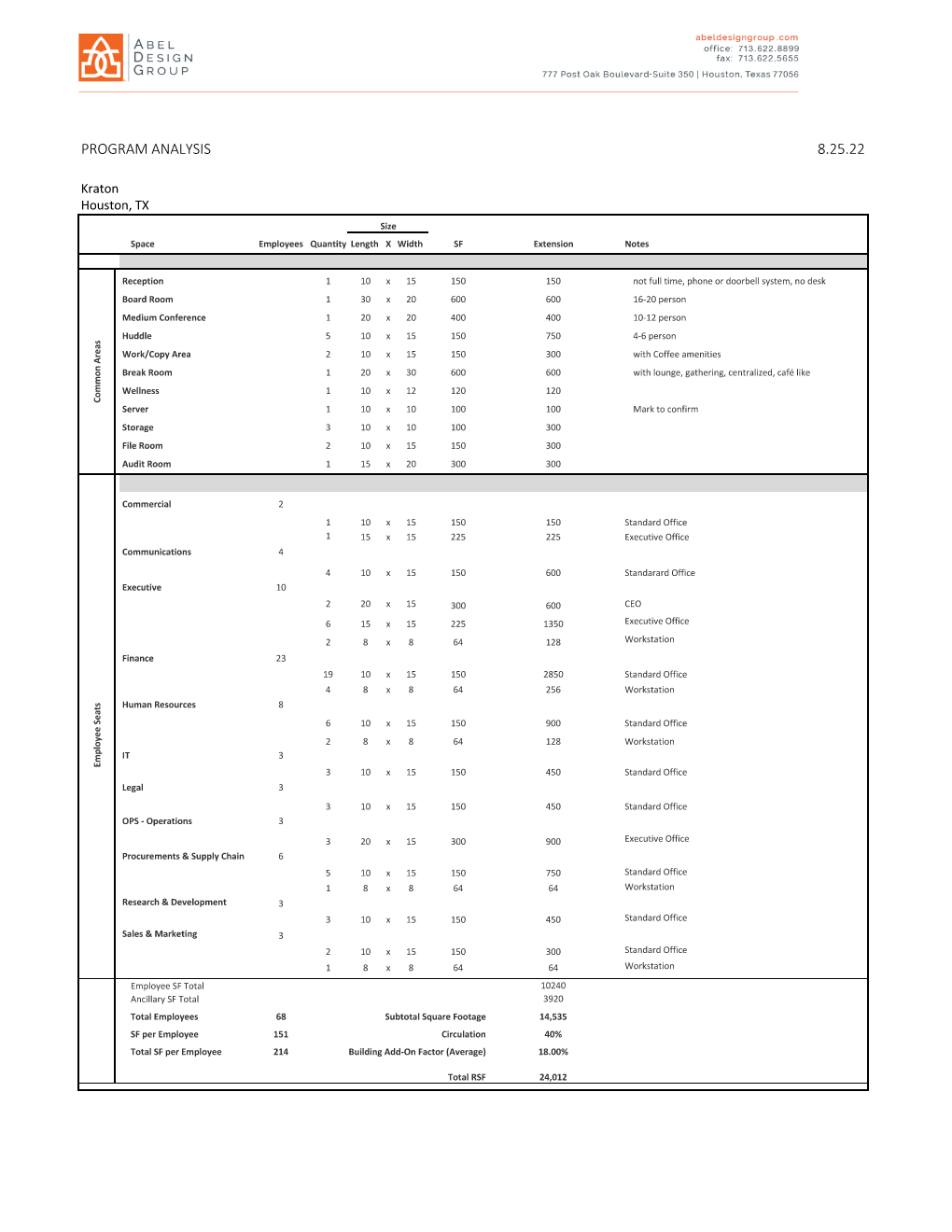Rentable Square Footage VS Usable Square Footage
Usable Square Footage should not include any common areas of the building such as public corridors, hallways, common areas, restrooms, etc. Again, the definition of Usable Square Footage is the official measurement of the space or square footage you will actually occupy.
Rentable Square Footage or RSF is the total square footage that tenants pay rent on and equals the Usable Square Footage plus the tenant’s pro-rata share of the Building Common Areas; such as: lobbies, public corridors, hallways, restrooms, utility closets, fire-sprinkler rooms, etc. When it comes to Building Common Areas, an example would be an office complex that has ten tenants utilizing a common area, where the ten tenants would share the proportionate amount of square footage based upon their percentage of the Usable Square Footage they occupy of the building.
Rentable Square Footage differs from Usable Square Footage in that Usable Square Footage is the tenant’s specific space they occupy whereas Rentable Square Footage also includes a portion or percentage of the property’s common areas.
The pro-rata share has many synonyms and is often referred to as the Rentable/Usable (R/U) Factor, the Core Factor, the Loss Factor or the Common Area Factor. Regardless of what title it receives, the amount will typically fall in a range of 1.10 to 1.28 percent of the Usable Square Footage, depending on the particular building. Typically, a tenant who occupies an entire floor of an office building will have a lower R/U Factor compared to a tenant who occupies only a portion of a floor.
To show the math on this as an example, if the Usable Square footage is 3,000 square feet, and the R/U Factor or Common Area Factor is 1.20 percent or 20%, you take: 3,000 square feet x 1.20 = 3,600 Rentable Square Feet. See our programming example to the right. We determine the USF then calculate the add-on factor for the RSF.
Buildings or properties that offer additional amenities such as conference room facilities, fitness gyms or other property benefits will often include those square footages into the common areas as well, which can increase both the R/U Factor and the overall Rentable Square Footage.
Please find an example of our program analysis form where we determine how much space a client needs in RSF. You may find this excel form “Program Analysis” in J:\Houston\Forms\Houston.
When evaluating the Rentable Square Footage of a property, it’s important to understand that you are paying for additional square footage as part of your pro-rata share of the common areas in addition to your Usable Square Footage. You will then also pay your pro-rata share of the expenses to maintain the common areas and overall property.
One of the most common mistakes that tenants make is basing their actual square footage needs on the Rentable Square Footage number they see advertised. A tenant will often speak with an architect to determine the approximate size of space they need but won’t realize that there could be a substantial difference in the size space they need vs. the final Rentable Square Footage, especially if they are considering an office building.
In the example we used above, if a tenant believes they need 3,000 Usable or Buildable Square Feet for their space, and doesn’t understand the difference between usable and rentable, they will go search for 3,000 square feet, instead of a space that is actually 3,600 Rentable Square Feet with 3,000 Usable Square Feet or 3,000 Square Feet they can actually build out and occupy.
*text is from Carr.us
